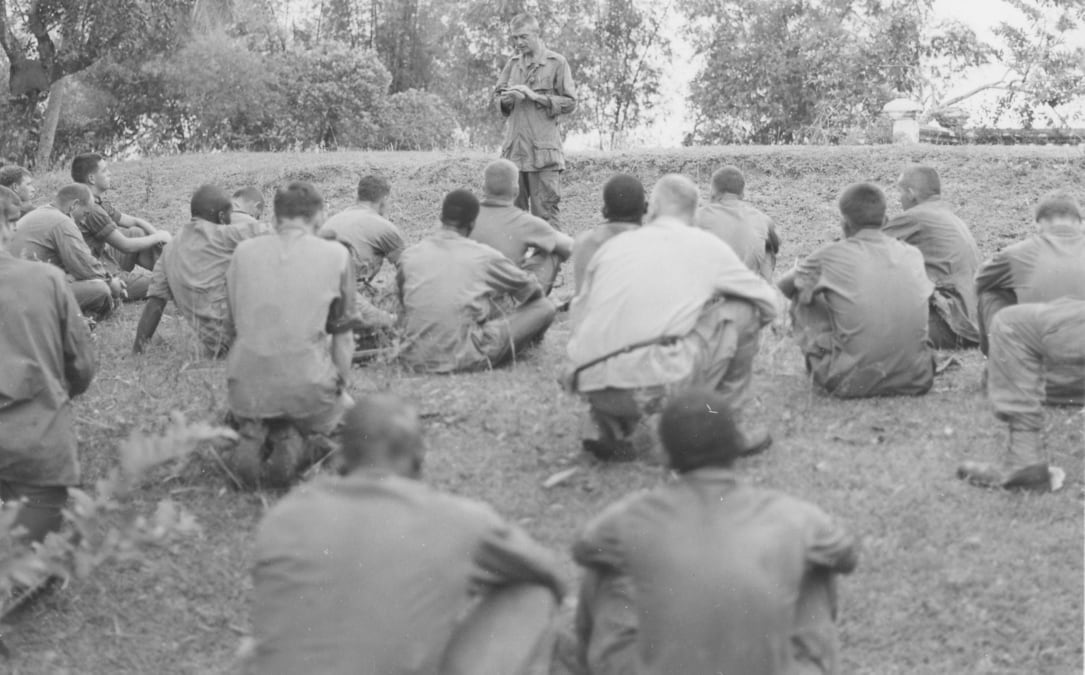Chaplains don’t usually come to mind when the words “combat soldier” are mentioned.
Yet 16 American chaplains lost their lives in the line of duty during the Vietnam War. Two of them, both Catholic priests, Navy Lt. Vincent Robert Capodanno and Army Maj. Charles Joseph Watters, posthumously received the Medal of Honor for their heroism and valor on the battlefield.
Father Capodanno, a man many Marines have called a saint, is now in fact a candidate for canonization. Capodanno was known to the troops as the “Grunt Padre.”
Marine veteran Ray Harton remembers meeting him in a base mess tent: “He was just like one of the Marines… . His voice was what set him off from the rest, soft-spoken yet gruff enough to get your attention. He prayed with us and let us know he was there.”
Retired Marine Col. Gerald H. Turley described Capodanno as “a humble person, obviously at peace with himself in a place where war was going on.”
Chaplain Daniel L. Mode first learned of Capodanno in 1989 while he was attending the Navy Chaplains School in Newport, Rhode Island. He considered basing his master’s thesis on Capodanno but he was amazed to find how little actual information was available on him.
In spite of that, Mode repeatedly came across people in the Navy and the Marine Corps who had known the chaplain and were eager to talk about him. Mode collected all the information he could find and eventually turned it into a book, The Grunt Padre.
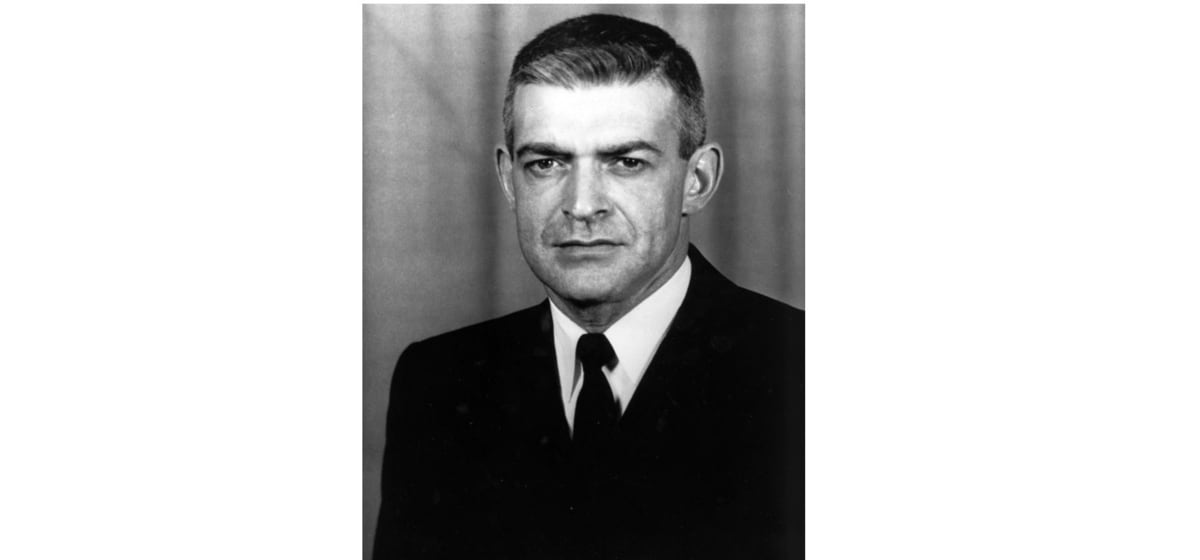
Vincent Capodanno was born in Staten Island, N.Y., on February 13, 1929. He studied for the priesthood at Maryknoll Missionary Seminary in New York and was ordained in June 1957. In December 1965 he was commissioned as a lieutenant in the Navy Chaplain Corps and was assigned to the 1st Marine Division in Vietnam in April 1966. He immediately fell in love with his Marines.
On September 4, 1967, during Operation Swift in the Que Son Valley, Chaplain Capodanno accompanied the 3rd Battalion, 5th Marines when M and K companies were sent to support 1st Battalion, 5th Marines, which was heavily engaged with some 2,500 enemy troops near the village of Dong Son.
When Chaplain Capodanno learned that M Company’s 2nd Platoon was in danger of being overrun, he left the relative safety of the company command post and raced through an open area that was being raked with fire, directly to the beleaguered Marines.
A machine gun opened fire from a clump of bushes 10 to 15 meters away from the 2nd Platoon, and Sergeant Lawrence Peters shouted, “Get that gun!”
Marine Ray Harton was hit in the arm, and his rifle was shattered by another enemy round. NVA troops were assembling for an assault on the stunned Marines, pinned-down by the machine gun.
Radio-telephone operator Stephen Lovejoy was wounded in the open. Chaplain Capodanno ran through the withering fire, grabbed Lovejoy by the strap of his radio and dragged him to a hastily established perimeter near the top of the hill.
The chaplain immediately began attending to the dead and the dying, administering the Last Rites. Harton felt someone touch him. Father Capodanno spoke to him in a soft voice: “Stay calm, Marine, someone will be here to help. God is with us all this day.”
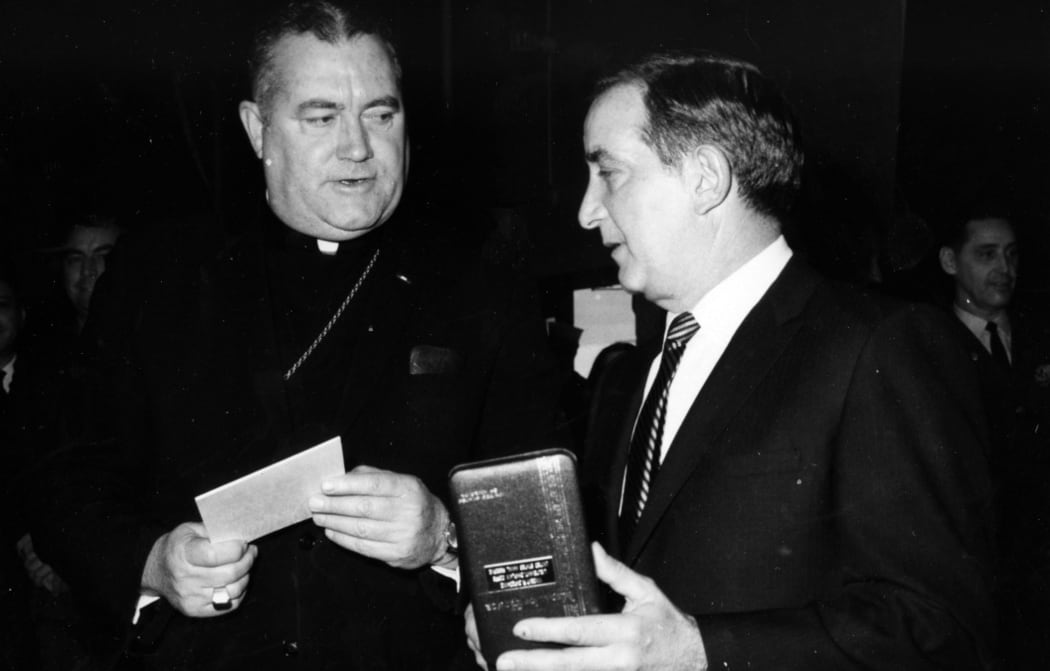
As Father Capodanno moved among the Marines, he was wounded in the face. A company commander requested tear gas on the enemy positions from the supporting mortars, and Capodanno gave his own gas mask to a Marine who had lost his.
“You need this more than I,” the chaplain casually muttered, as he continued to offer what comfort he could, bare-headed and with blood streaming down his face and neck.
A mortar round landed close by; fragments from the explosion wounded the chaplain again in the arms and legs, and tore off a portion of his right hand. Despite his severe wounds, he continued moving ahead toward Sgt. Peters, who had just fallen and had blood spurting from his mouth. Capodanno dragged Peters to safety and refused help for himself as he continued to care for the others.
When one Marine yelled out, “Chaplain, my rifle’s jammed!” the priest, without any hesitation, rushed back out into the exposed area to retrieve Peters’ discarded rifle for the man.
Below the knoll and outside the perimeter, Lance Cpl. Frederick Tanke was attempting to stop the blood gushing from the thigh artery of mortally wounded corpsman Armando Leal. As they were about to be overrun, Tanke saw an enemy soldier about 15 meters away. Tanke fired a burst, but his weapon then jammed. When Tanke withdrew to a covered position, Father Capodanno left the Marine perimeter and ran to Leal. He picked up the dying corpsman and placed his own body between him and the enemy fire.
As he was attempting to bandage Leal’s wound, the enemy machine gun killed them both.
On the day following his death, a letter from Father Capodanno was delivered to the regimental commander of the 5th Marines.
“I am due to go home in late November or early December. I humbly request that I stay over Christmas and New Year’s with my men. I am willing to relinquish my thirty days’ leave.”
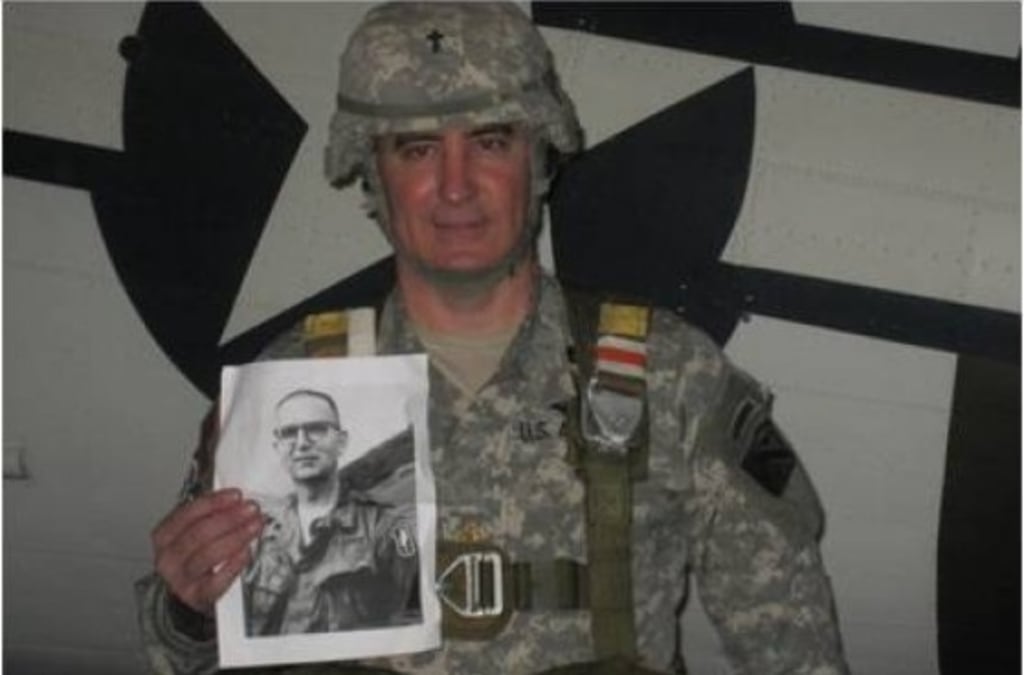
Maj. Charles Watters had known he wanted to be a Catholic priest since he was in the fourth grade. Born on January 17, 1927, in Jersey City, New Jersey, he graduated from Seton Hall University. He was ordained in 1953.
A qualified private pilot, he became a chaplain in the New Jersey Air National Guard in 1962. Watters joined the U.S. Army Chaplain Corps two years later, and at 38 he volunteered for airborne training.
In July 1966, he went to Vietnam and was assigned to the 101 Airborne Division. During his 12-month tour he received the Air Medal and the Bronze Star Medal with V Device for battlefield valor.
In July 1967, he voluntarily extended an additional six months and was assigned to the 173rd Airborne Brigade (Sky Soldiers).
On November 19, 1967, Father Watters was one of three chaplains with the 173rd at Hill 875 near Dak To. Chaplain Watters was with a company moving along the base of a sparsely vegetated hill when it started taking heavy machine gun, mortar and rocket fire from an entrenched NVA battalion.
As American casualties began to mount, Chaplain Watters showed a complete disregard for his own safety. He rushed up the hill to the line of contact, unarmed and completely exposed, giving aid to the wounded, assisting in their evacuation and administering the Last Rites to the dead and dying. At times he was even in front of the most advanced American positions.
When a wounded Sky Soldier froze in shock in front of the assaulting forces, Chaplain Watters ran out to him, lifted the man up on his shoulders and carried him to safety. As the GIs battled their way to the leading NVA trench line, Chaplain Watters ran through the intense enemy fire to aid a fallen paratrooper.
The Americans pulled back to prepare for a second assault, and Chaplain Watters exposed himself to both friendly and enemy fire between the two positions, working feverishly to recover two wounded soldiers.
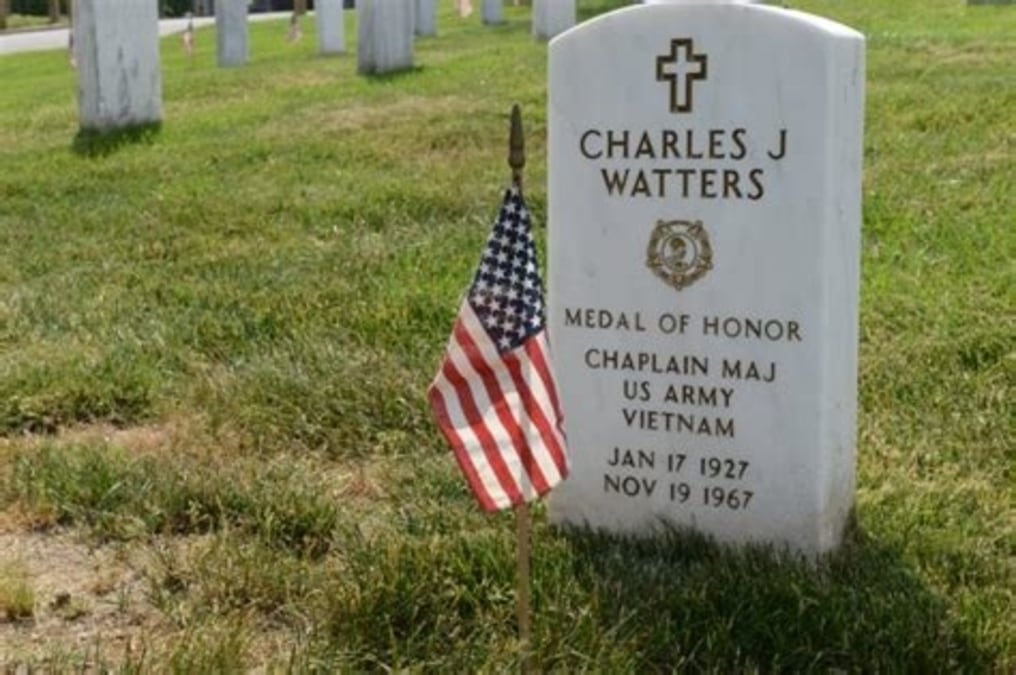
As the fight raged on, the GIs finally were forced to pull back and form a hasty defensive perimeter. Chaplain Watters saw several wounded soldiers lying outside the newly formed perimeter and immediately moved to their aid, resisting all attempts to restrain him. He left the perimeter three times in the face of small-arms, automatic weapons and mortar fire, carrying and assisting the wounded troopers to safety.
Once he was satisfied that all of the wounded were inside the perimeter, he began helping the medics, dressing wounds and giving the GIs food and water, as well as spiritual strength and comfort.
As darkness descended on the battlefield, Chaplain Watters was kneeling and administering the Last Rites to a dying GI when he was killed by a 500-pound bomb, dropped short from a friendly airstrike.
Chaplains Capodanno and Watters were not only men of God; they were also among the greatest of America’s soldiers, displaying uncommon courage and selfless compassion for their comrades in the midst of deadly combat.
Both priests lived and died for the grunts they loved.
This article was originally published in the June 2008 issue of Vietnam Magazine, a sister publication to Navy Times. To subscribe, click here.
